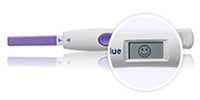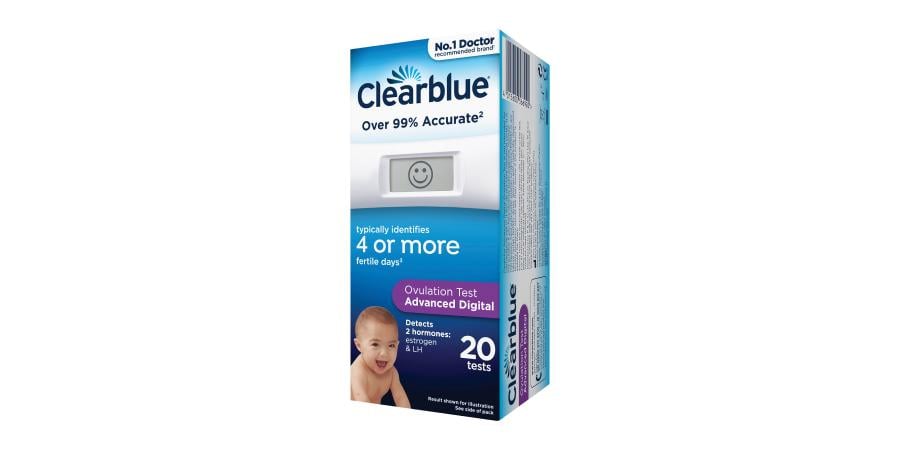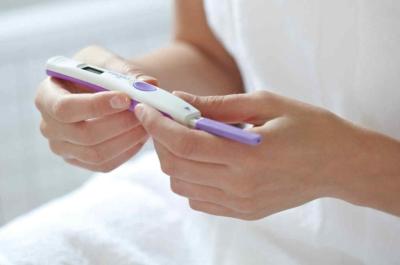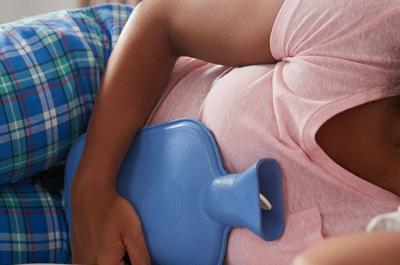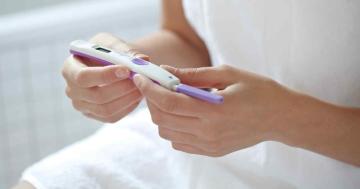
There are only a few days (typically six, called your “fertile window”) each cycle when you can get pregnant, the days leading up to and the day of ovulation. Knowing when these days are in your cycle is key if you are trying for a baby. There are various signs and symptoms of ovulation and most methods of detecting ovulation rely on these to help you identify your fertile days. In this article, we look at these signs and symptoms and show how they can be used to help you:
In this article
- Signs and symptoms of ovulation
- LH surge
- Temperature rise
- Ovulation pain – Mittelschmerz
- Changes in saliva
- Changes in cervical mucus
- Use these signs and symptoms to predict your most fertile days
- Do ovulation tests/ovulation predictor tests
- Use the calendar method to document your cycles
- Record basal body temperature (BBT)
- Record ovulation pain – Mittelschmerz
- Track saliva observations
- Track cervical mucus observations
Signs and symptoms of ovulation
- Many women experience no physical ovulation symptoms. Women who experience symptoms find these can vary from cycle to cycle.
- Most of the signs only occur after ovulation has happened which makes them of little help in predicting your fertile window.
- The LH surge (detected by ovulation tests) happens 24 – 36 hours before ovulation
Ovulation is the name of the process that happens usually once in every menstrual cycle when hormone changes trigger an ovary to release a mature egg. This typically happens 12 to 16 days before the next period starts. These are the common signs and symptoms of ovulation.
LH surge
As a woman approaches ovulation, her body produces increasing amounts of a hormone called estrogen, which causes the lining of her uterus to thicken and helps create a sperm friendly environment. These high estrogen levels trigger a sudden increase in another hormone called luteinising hormone (LH). This LH surge causes the release of the mature egg from the ovary - this is ovulation. Ovulation normally occurs 24 to 36 hours after the LH surge, which is why the LH surge is a good predictor of peak fertility.
Temperature rise
A woman’s basal (resting) body temperature rises by 0.4-1.0°C after ovulation. This rise is normally too small for a woman to notice, but can be detected by an accurate thermometer.
Ovulation pain – Mittelschmerz
About one in five women have pain associated with ovulation. The pain may occur just before, during, or after ovulation. There are several explanations for the cause of this ovulation pain. Just prior to ovulation, follicle growth may stretch the surface of the ovary, causing pain. At the time of ovulation, fluid or blood is released from the ruptured egg follicle and may cause irritation of the abdominal lining or surrounding organs.
Mittelschmerz may be felt on one side one month then switch to the opposite side the next month, or it may be felt on the same side for several months in succession. It typically lasts for only a few minutes but it can last for longer, possibly as long as 24-48 hours, and can be a sharp, cramping, distinctive pain. It is rarely described as severe pain.
Changes in saliva
It has been found that a woman’s saliva changes according to the amount of the hormone estrogen in her body. During a woman’s monthly cycle, there is a large rise in estrogen a few days before ovulation and another smaller rise a few days before her period is due.
Changes in cervical mucus
During a woman’s menstrual cycle, the type and amount of cervical mucus (a secretion made by glands in the cervix) changes. It can be sticky or stretchy, white or cloudy. In the days leading up to ovulation it changes to being clear and stretchy (and is often compared to egg white – leading to the name ‘egg white cervical mucus’). This mucus is supportive to sperm and helps them to reach the egg.
Use these signs and symptoms to predict your most fertile days
- Some methods can only identify when ovulation has already occurred, therefore they are of little value in helping a woman to conceive during that cycle.
- Ovulation tests detect the LH surge which happens 24-36 hours before ovulation.
- Clearblue Ovulation Tests are at least 99% accurate in detecting the LH surge.
- The calendar method has been found to predict the correct fertile days in only a third of cycles1.
To maximise your chances of becoming pregnant, it’s important to time intercourse for the days leading up to and the day of ovulation. These are ways in which you can use the signs and symptoms of ovulation to help you identify these fertile few days each cycle.
Do ovulation tests/ovulation predictor tests
Clearblue Ovulation Tests and the Clearblue Advanced Fertility Monitor are easy to use and detect the key fertility hormones from a urine sample. They are at least 99% accurate in pinpointing the LH surge and can identify up to six fertile days during each cycle when you are most likely to become pregnant.
Use the calendar method to document your cycles
If you have a regular menstrual cycle, you can try to predict ovulation by carefully recording the length of each cycle. You will need to record the length of your cycle for at least a couple of months to start to build up a picture. For a very regular menstrual cycle, ovulation normally happens between 12 and 16 days before your next period starts. However, the day you actually ovulate can still vary by several days between cycles, even with a regular menstrual cycle.
In recent studies the calendar method has been found to predict the correct fertile days in only a third of cycles2
Record basal body temperature (BBT)
This method uses the fact that your basal body temperature rises by 0.4-1.0°C after ovulation by which time it is too late to optimize the chances of conception in that menstrual cycle2. To use this method accurately, you have to take your basal body temperature first thing every morning before moving out of bed, and it will take several menstrual cycles before you start to build up a picture of your fertility window. There are also many factors, like sleep cycles changes, travel, and alcohol consumption that can change your BBT. Studies have shown that using a woman’s basal body temperature to predict her fertile days (to within a day) is less than 70%2 successful.
Record ovulation pain – Mittelschmerz
Approximately one in five women have pain associated with ovulation. However, because the pain may occur during, or even after, ovulation this is often not that helpful to identify the days prior to ovulation and the day of ovulation itself when you are most fertile.
Track saliva observations
It has been found that your saliva changes according to the amount of the hormone estrogen in your body, and there are kits available that can help you to monitor these changes. They usually consist of a tiny microscope with a glass surface – you place some spit on the glass surface, wait for it to dry and then look through the microscope for a ‘ferning’ pattern that is caused by salt crystals in the saliva when your estrogen level is high. However, changes in saliva have been shown to be an unreliable method of ovulation prediction and are hard to interpret2. Saliva can also be affected by smoking, drinking alcohol and eating.
Track cervical mucus observations
During your menstrual cycle, the type and amount of cervical mucus (a secretion made by glands in your cervix) changes. It can be sticky or stretchy, white or cloudy. In the days leading to ovulation it becomes clear and stretchy and is often likened to egg white. By making a note of these changes, you can predict when you will ovulate so you can have sex on your most fertile days. The main advantage of this method is that it gives you a better understanding of your body, making you more aware of the changes your body goes through during a menstrual cycle. However, it can take time to learn how to ‘read’ the changes, and your cervical mucus can be influenced by other factors, including infections, sex and some medication
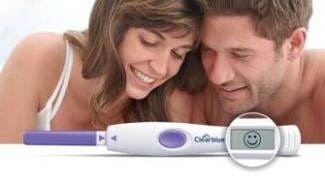
Advanced Digital Ovulation Test
In every cycle there are only a few days when a woman can conceive, so having sex on these days is very important if you are trying to get pregnant. The Clearblue® Advanced Digital Ovulation Test is the first and ONLY test that typically identifies 4 or more fertile days each cycle.
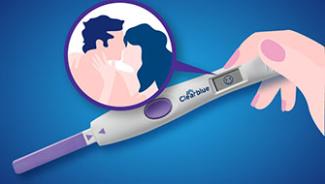
Find your most fertile days
Ovulation tests are an accurate and simple way to identify your most fertile days to maximise your chances of getting pregnant.


